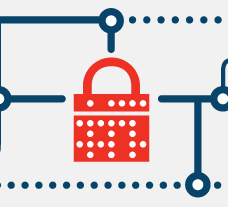For decades, security has been focused at the architectural level, with patching and upgrading being critical; this is a fundamental component of IT security. But there’s much more to think about when testing new data center technology, including hyperconverged infrastructure (HCI) solutions.
It is critical to ensure security in an HCI to safeguard your organization’s data, apps, and overall IT environment. Here are a few tips to help you improve security in your HCI environment.
Role-Based Access Control
It all begins with who has the power to do what to what. If you are purchasing infrastructure today and it needs comprehensive and granular role-based access control (RBAC) to regulate who can and cannot do what with the hardware, you should seek a better solution.
RBAC should be considered while purchasing anything. Certain people need extensive access to control the environment, while others require basic access to build a VM. This isn’t so much about whether or not someone can be trusted—though it can be—as it is about what type of harm can be done by someone with too many powers when their account is hacked, or there is a disagreement between employer and employee.
The software used to administer an HCI environment must support this kind of delegation and security. More significantly, the consumer should be able to choose the degree of access. Not everyone needs or desires a slew of predefined jobs that may or may not correspond to local requirements. Customers may describe precisely what they want with very granular bespoke RBAC permissions.
Data-At-Rest Encryption
More than physical security is needed for businesses seeking to improve their security posture. Every facet of the environment must be secure, whether or not a specific component will leave the bounds of the data center.
Take storage as an example. Authorized users have access to storage resources from all around the globe.
But what about those who are not authorized? What if they obtain access to your surroundings and begin snooping around? In a perfect scenario, they still can’t see anything since it’s encrypted on disks in your data center.
There was a moment when encrypting data at rest was optional. Not any longer. Your hyper converged infrastructure solution must now enable this capability. It is less critical that the manufacturer utilizes proprietary technology or disks that enable encryption natively than the kind of security features the vendor offers.
It is vital to remember that self-encrypting disks are not required to enable data-at-rest encryption. The objective of any environment should be to allow highly secure computing techniques without regard for the underlying hardware’s capabilities. If the device natively enables data-at-rest encryption, that’s fantastic. If not, the hyperconverged solution’s software should deliver such services.
Single Sign-on
Scattered logins pose a serious security risk in a variety of ways. First, they compel users to set unique passwords for each resource, which may lead to individuals creating written password lists to keep track of everything.
Second, when a user quits or changes positions, an accounting must be performed to establish which systems that person had access to; those credentials must be shut off or altered. It can become nasty, especially if a critical system is overlooked and a deceased user’s account survives for months or years, waiting for someone to abuse it.
SSO services were created to solve the requirement for centralized authentication techniques. These services concentrate on important authentication capabilities, with the SSO service having connections to an organization’s systems. SSO securely connects with various other systems, removing the need for different credentials.
When a new user is provisioned using SSO, they enter an SSO portal and can instantly access all permissible resources for which their role is specified. They don’t have to remember 57 unique passwords for various services or handle multiple logins and a tangle of password complexity requirements.
HCI components for both administrators and end users should support SSO. Administrators must have access to centralized administration portals, and users must have access to specific services that the HCI environment may deliver directly. Furthermore, any auxiliary services provided by the solution must support SSO. Fortunately, the majority of enterprise-grade hyperconverged platforms have this functionality.
Counting the Benefits of Encrypting VMs for HCI
Encrypting VMs for HCI provides various advantages to the IT department and the larger company. It can be expanded with each new VM spun up, providing a highly scalable strategy that guarantees the security of the enterprise’s data.
Furthermore, VM-level encryption protects against lost or stolen physical disks and allows IT teams to prevent unauthorized data transfer, access, or replication. In addition, there are five more benefits to using VM-level encryption:
Portable Protection
VM-level encryption avoids the possibility of hardware, hypervisor, or cloud provider lock-in, providing portable security perfect for hybrid IT systems and in-transit applications.
Enhanced Governance
IT teams may also enable VM-level encryption by enabling boot-based rules that regulate who can access data, where it lives, and how data is secured.
Continuous Protection
Unlike physical-level encryption, which leaves workloads exposed while in transit, VM-level encryption secures workloads consistently while they migrate, clone, or snapshot throughout the corporate architecture.
Ease of Termination
Individual workloads may also be safely terminated in a basic and easy way because of VM-level encryption.
As a result, businesses must take adequate precautions to guarantee that such sensitive data is never made public. However, the attack surface grows considerably as IT infrastructures become more virtualized and hyper-converged. As a result, data security has risen to the top of the priority list.
Flexible Protection
IT organizations may encrypt important workloads and execute them safely alongside non-sensitive workloads using VM-level encryption, providing separate keys and rules to various VMs.
Conclusion
The solution is to use in-guest encryption with keys that stay under the control of the VM owner —the organization itself—to guarantee protection inside the data. As we’ve seen, VM-level encryption secures workloads inside and outside the business architecture. It also provides a slew of other benefits, such as making it simple for IT teams to manage all elements of data security. Implement access controls to guarantee that only authorized users can access data, even if a cloud system is breached.









